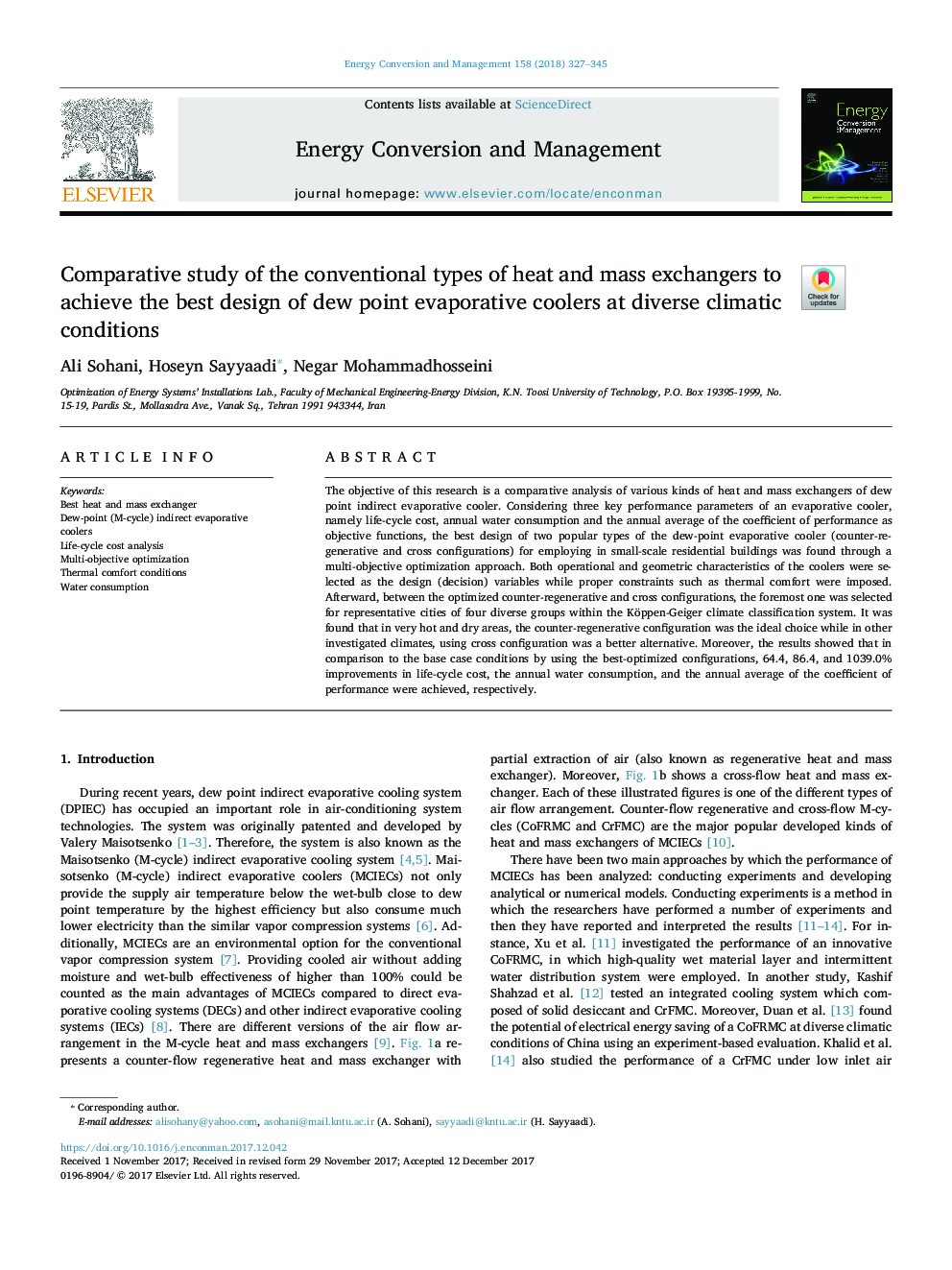| Article ID | Journal | Published Year | Pages | File Type |
|---|---|---|---|---|
| 7159201 | Energy Conversion and Management | 2018 | 19 Pages |
Abstract
The objective of this research is a comparative analysis of various kinds of heat and mass exchangers of dew point indirect evaporative cooler. Considering three key performance parameters of an evaporative cooler, namely life-cycle cost, annual water consumption and the annual average of the coefficient of performance as objective functions, the best design of two popular types of the dew-point evaporative cooler (counter-regenerative and cross configurations) for employing in small-scale residential buildings was found through a multi-objective optimization approach. Both operational and geometric characteristics of the coolers were selected as the design (decision) variables while proper constraints such as thermal comfort were imposed. Afterward, between the optimized counter-regenerative and cross configurations, the foremost one was selected for representative cities of four diverse groups within the Köppen-Geiger climate classification system. It was found that in very hot and dry areas, the counter-regenerative configuration was the ideal choice while in other investigated climates, using cross configuration was a better alternative. Moreover, the results showed that in comparison to the base case conditions by using the best-optimized configurations, 64.4, 86.4, and 1039.0% improvements in life-cycle cost, the annual water consumption, and the annual average of the coefficient of performance were achieved, respectively.
Related Topics
Physical Sciences and Engineering
Energy
Energy (General)
Authors
Ali Sohani, Hoseyn Sayyaadi, Negar Mohammadhosseini,
